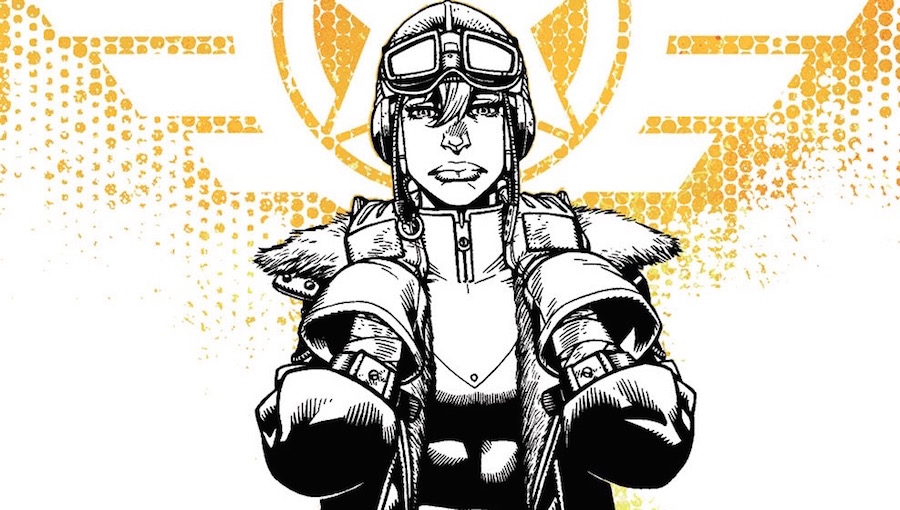There’s just about every flavor of post-apocalyptic fiction these days. The Walking Dead still pulls readers (and viewers) into its tense, ongoing narrative. Greg Rucka’s Lazarus depicts the aftermath of an economic apocalypse, with the wealthy and powerful resuming feudal roles. The Wake and The Massive both take aim at the aftermath of ecological disasters through its effects on the world’s oceans and coastlines. And, of course, there are other pop culture mainstays, like the car-focused Mad Max franchise or the tongue-in-cheek post-nuclear wastelands of the Fallout games. Wild Blue Yonder – the creation of the team of Mike Raicht (who writes), Zach Howard (who, with colorist Nathan Daniel, provides the art), and Austin Harrison – marks another, and though it may not do anything you haven’t seen in the genre at large, what it does, it does with its own style.
The world’s air has been ravaged by humanity’s foolish excess. Below a certain altitude, it is essentially unbreathable – either too filthy to live in or too irradiated to last long. Those people who survive mostly survive at high altitudes, at mountaintops or, as you might expect from the title, on airships. Wild Blue Yonder, to its credit, doesn’t spend much time on its mythology; it gives you what you need and it moves on.
Our main character is Cola, a young fighter pilot whose life revolves around protecting The Dawn, the only solar-powered airship in the world. Her family has been part of the crew since before she was born. She drags Tug, a young miner’s son, into the adventure when she recruits him from the life of labor he’s headed toward; The Dawn needs to replace some losses. The ship, legendary for its lack of reliance on fuel, is being pursued relentlessly by the armada of the Judge, a no-nonsense leader who feels more Darth Vader than Immortan Joe. He offers an almost-compelling counterpoint to the heroes but is a little too operatic at times to be completely relatable.
Wild Blue Yonder is an action-adventure above all, replete with aerial dogfights between weirdly retro fighter planes, brutal boarding actions, and guys with jetpacks (called “guns”) flitting between craft, waiting to hear the telltale sputter of their pack as it runs low. At its best, the art performs this role admirably; there are more than a few pages which capture the breadth of the chaos, all the little details of battle. Yet, at times, it feels like it’s zoomed in too close, to the point that it is difficult to tell what is happening to whom. This is only an infrequent problem, though, and when the art is firing on all cylinders, you can practically see it move.
While Wild Blue Yonder’s reach does occasionally exceed its grasp like a gun scrabbling to hold onto the plane’s wing, for the most part it is an exciting, character-driven story in a world that feels desperately close to cinematic. The relative passiveness of its heroes (as the plot is wholly driven by their attempts to evade pursuit, not by a goal they wish to achieve) sometimes leaves the story hanging, but when things happen, they really happen. Brutal, exciting, and fantastic to look at, Wild Blue Yonder is a potent pulp apocalypse.

